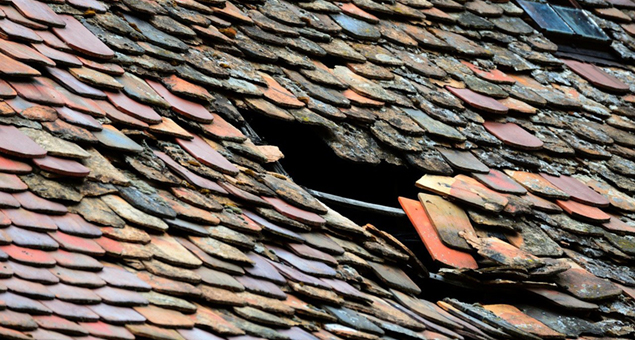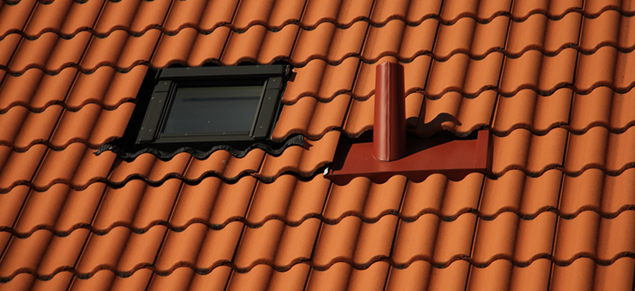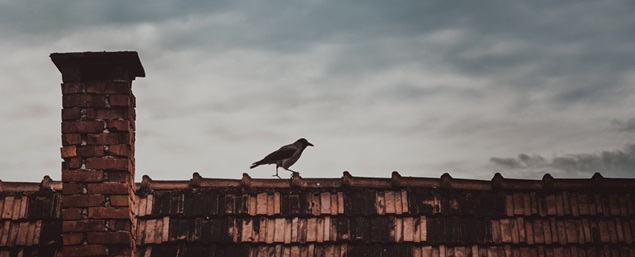15 Most Common Roof Problems in Central Texas
15 Most Common Roof Problems According to Where You Live
Owning a home means you’ll eventually have to repair or replace your roof! Here are 15 common reasons why homes in Central Texas need roof repair.
If you own a home, you will almost certainly run into problems with your roof at some point. Keeping your roof in good condition can be a constant struggle in Central Texas, but it is important.
Damage to your roof can lead to damage to the rest of your home, including both the structure itself and your most prized possessions. Enough damage can call for a complete roof replacement as problems can build up slowly over time. It can occur suddenly due to a storm or other incident. It can also result from installation errors.
The following are fifteen of the most common types of roof damage that can occur in the central Texas area.
Normal wear and tear issues

Image credit: Pixabay
Damage to a roof can build up over time until something serious happens. This kind of damage can be difficult to detect until it starts to damage something else.
1. Roof leaks
Roof leaks are probably the most common type of roof damage in any area or climate. They can occur suddenly, like if an object falls and punches a hole through the roof. They can also develop gradually, through some combination of factors like weather and temperature.
Discolored or damp spots on ceilings are a clear sign of a roof leak. They require prompt attention in order to prevent further damage to the home.
2. Water buildup
Water can pool in flat areas of a roof, or in areas where depressions have formed. Over time, this can weaken the roof. Creating tapered areas to allow greater runoff can help with this problem.
3. Damaged or clogged gutters
Water can build up in a clogged gutter and overflow into places where it can damage the roof. Keeping gutters clear is an important part of caring for your roof. Other damage to a gutter can also block the flow of water, putting the rest of the roof at risk.
Read more: How Do Rain Gutters Affect Roof Health?
4. Damage to skylights
Skylights, whether they are made from glass or plastic, are a vulnerable part of any roof. Sudden damage from falling tree limbs or hail can cause water to leak into other parts of the roof or into the house. They can also wear down over time, potentially leading to cracks.
5. Worn or damaged shingles
The Texas heat can cause shingles to dry out and become brittle. They are then vulnerable to rain or wind. This risks damage to the underlying layers of the roof.
6. Loose, damaged, or missing flashing
The metal strips that seal skylights, chimneys, vent pipes, and other objects that connect the inside of the house to the outside are known as “flashing.” If the flashing is loose, damaged, or missing, it can allow not only water into the house, but also various pests that will do even more damage to the inside.
7. Damaged roof ventilation

Image credit: John Kinnander
Roof vents for chimneys, water heaters, and HVAC systems need screens and flashing to keep water and pests out of the house. Damage to a roof vent itself can prevent air from venting outside. This can cause damage to the roof and other parts of the house over time.
8. Wood rot
Wood rot happens when damp or humid conditions allow certain types of fungi to grow on wood. It causes the wood to decay, losing its structure and strength. Damaged or missing shingles can allow water and humidity to seep into the underlying wood. The rot can spread further into the house over time.
Issues due to weather
The Central Texas climate, perhaps best characterized as “hot and humid,” can cause gradual roof damage. Weather in Central Texas can also cause sudden, sometimes catastrophic damage to roofs.
9. Heat
Temperatures during Texas summers routinely exceed 100 degrees Fahrenheit. The sun beats down relentlessly on roofs in Austin and surrounding areas. This can affect shingles, underlying roof layers, flashing, and other parts of the roof.
10. Storms
Austin is no stranger to thunderstorms. High winds can damage shingles, or remove them entirely. Hail can pummel roofs, weakening them to the point where hailstones can occasionally punch holes all the way through.
11. Trees
A strong enough storm can blow an entire tree over onto a house. Tree limbs in Texas do not always need a storm to cause them to fall. Whatever a tree limb’s reason for falling, it can damage every layer of a roof.
12. Pests

Image credit: Pixabay
Certain types of critters welcome any opportunity to get out of the elements and into someone’s house. Squirrels, raccoons, opossums, or birds may find their way in through areas of a roof that are already damaged, or they could cause damage in an effort to get inside.
13. Snow and ice
Roof damage from snow and ice might not have been on very many Texas homeowners’ minds before 2021, but now we know that it can happen here.
Installation issues
Roof damage can result from improper installation of the roof itself or other components of the roof.
14. Inadequate installation
Installing a roof is a difficult, delicate task that requires careful attention to detail. A poorly installed roof can cause any of the kinds of damage discussed above to happen much more quickly than they otherwise would.
Read more: 6 Must-Ask Questions Your Roofer Should be Able to Answer
15. Extra roofing layers
It might be tempting to think that more layers of shingles mean more protection from the elements. Too many layers can actually cause damage, though. The uppermost layer will almost certainly be uneven. The added weight of extra roofing layers also puts strain on the roof’s framing, which will weaken the entire roof over time. Most building codes limit houses to two layers of roofing.
Your roof deserves a check-up!
The experienced professionals at RoofCrafters provide unmatched workmanship and service to greater Austin. Contact us today to schedule a roof inspection!
